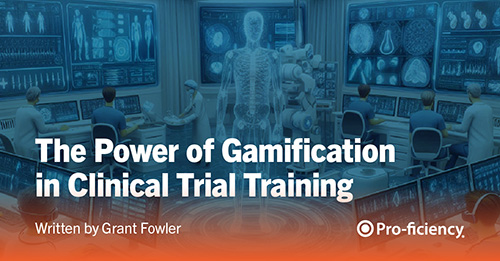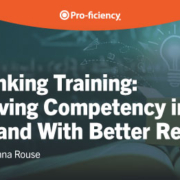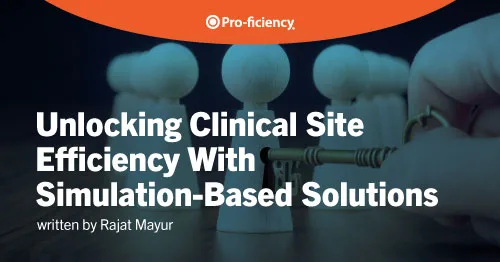The Power of Gamification in Clinical Trial Training
Gamification has become a buzzword in recent years, taking center stage in various industries such as education. But it’s often misunderstood and underutilized. Simply put, it’s making processes more game-like to engage users better. The video game industry, boasting titles like Candy Crush, knows the key to player engagement lies in those rewarding little endorphin rushes. However, gamification is not just about points and bright flashes. It is also about understanding what drives users to engage with content. When we bring this concept to the realm of clinical trial training, the results are fascinating, especially with Pro-ficiency’s unique approach.
At first glance, gamification and clinical trials seem worlds apart. Yet, they share common ground when simulations come into play. Unlike the repetitive matching of colored squares in Candy Crush, clinical trial simulations empower site teams, investigators, and doctors to take an active role in decision-making, altering the game’s results.
Why Simulations Work for Clinical Trial Training
The benefits that gamification, specifically simulation training, have for clinical trial site teams is immense, and Pro-ficiency has tapped into this approach’s immense potential.
- Conscious Choices with Real Outcomes: Unlike typical games where the aim is to score points, Pro-ficiency’s simulations immerse users in scenarios where their decisions lead to actual outcomes. This hands-on approach, paired with real-time feedback, ensures that users remain actively engaged.
- Engaging Multimedia Content: Traditionally tedious subjects come alive through captivating videos, interactive graphics, and audio clips. This not only grabs attention but also enhances information retention.
- First-person Immersion: Some of Pro-ficiency’s simulations are presented from a first-person viewpoint, which puts users into patient interactions, making the learning process more personal and relatable.
- Self-Guided Exploration: One size doesn’t fit all. Recognizing this, Pro-ficiency allows users to explore at their own pace, fostering a deeper understanding of the subject matter.
- A Stress-Free Learning Environment: The fear of making mistakes can hamper the learning process. Pro-ficiency’s simulations turn mistakes into valuable teaching moments, creating an environment conducive to growth.
- Meaningful Performance Metrics: Pro-ficiency “grades” and “ranks” users compared to their peers, fostering a sense of healthy competition and camaraderie.
Gamification has been used in education for years with obvious benefits. A 2019 study from the Journal for Nurses in Professional Development found that gamification had a positive effect on the orientees’ motivation and knowledge retention. Another 2014 study from the Postgraduate Medical Journal found statistically significant increases in knowledge retention over time using gamification with graduate students.
Traditional static training struggles to impart the same benefits. Users often struggle with retention and engagement when material is presented statically. Simulations enable clinicians to gain a deep-seated knowledge of their work, protocols, and patients. They also provide a safe haven to make and learn from mistakes before they become a larger issue in the real world.
Click here to learn more about Pro-ficiency’s use of gamification in our simulation-based methodologies.







